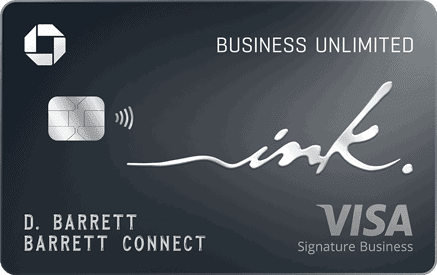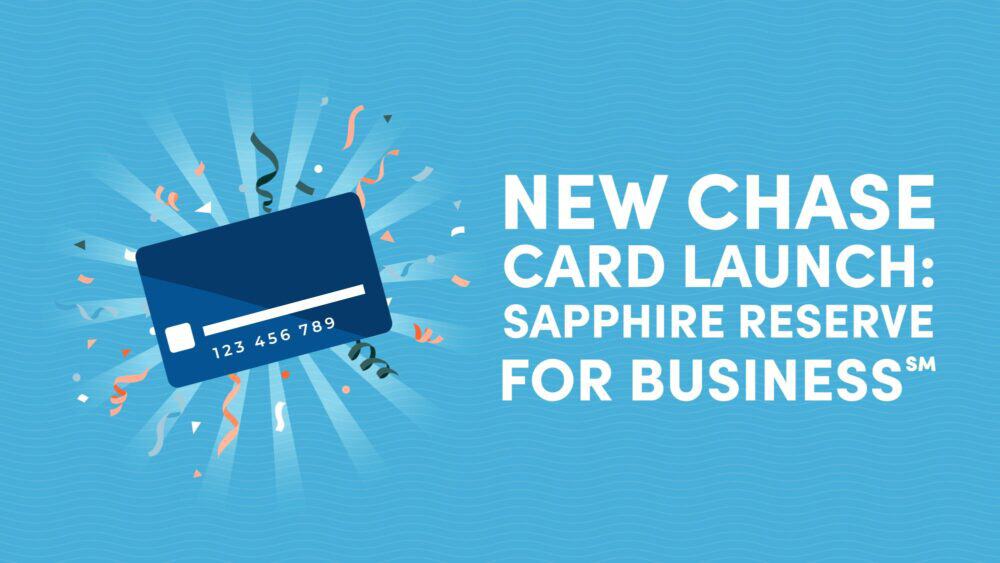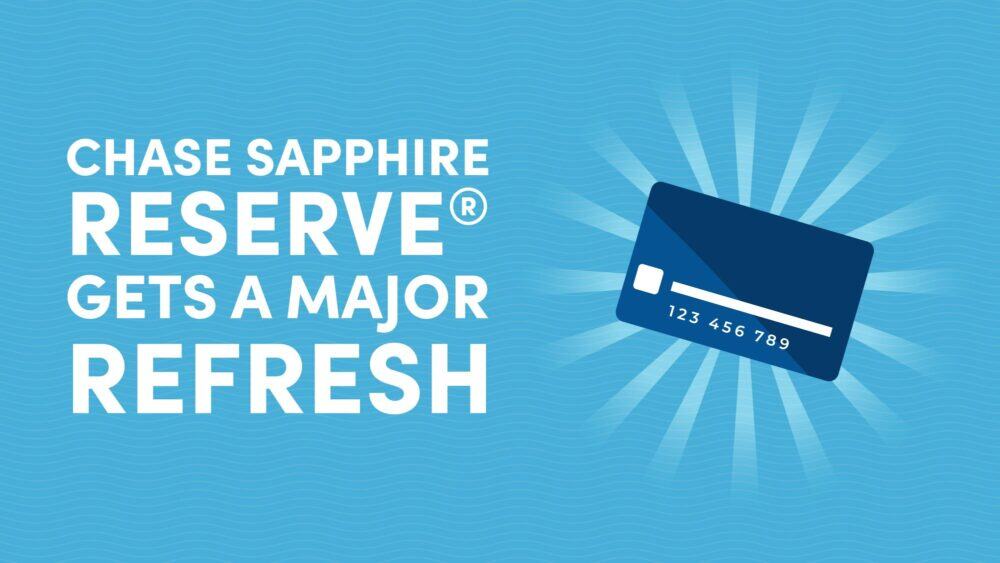
10xTravel is part of an affiliate sales network and receives compensation for sending traffic to partner sites, such as CreditCards.com. This compensation may impact how and where links appear on this site. This site does not include all financial companies or all available financial offers. Terms apply to American Express benefits and offers. Enrollment may be required for select American Express benefits and offers. Visit americanexpress.com to learn more. All values of Membership Rewards are assigned based on the assumption, experience and opinions of the 10xTravel team and represent an estimate and not an actual value of points. Estimated value is not a fixed value and may not be the typical value enjoyed by card members.
Note: Some of the offers mentioned below may have changed or may no longer be available. The content on this page is accurate as of the posting date; however, some of our partner offers may have expired. You can view current offers here.
The Chase Sapphire Preferred® Card has been a highlight of Chase’s consumer card portfolio for years. However, when Chase released the Chase Sapphire Reserve® in 2016, it stole all the limelight and set the stage for other card issuers to up their game in the premium card arena.
Both cards have great benefits, earn Ultimate Rewards, offer the ability to earn a generous welcome bonus and have the same airline and hotel transfer partners. But since you can’t hold both of these cards at once, you’ll have to decide which one is right for you. This article will outline the pros and cons of each card and aim to steer you in the right direction.
The Chase Sapphire Reserve® comes loaded with lots of premium benefits, but it also has a high annual fee. The Chase Sapphire Preferred® Card comes with fewer benefits but has a much lower annual fee. So will you save money by choosing a card with a lower annual fee? The answer is not always as straightforward as it seems, and you’ll soon see why so many people are faced with this dilemma.
Before we dig deeper into which is the best credit card for you, it’s important to mention that both cards are subject to Chase’s 5/24 rule, so keep that in mind when choosing between the Chase Sapphire Preferred vs. Reserve.

Chase Sapphire Preferred Overview
The Chase Sapphire Preferred® Card is a mid-tier flexible rewards card that offers a lot of great benefits with an affordable $95 annual fee.
The Chase Sapphire Preferred offers the following benefits:
- Earn 5x on travel purchased through Chase TravelSM, 3x on dining, select streaming services and online groceries, 2x on all other travel purchases, 1x on all other purchases.
- Travel protections like trip cancellation/interruption insurance, auto rental collision damage waiver, trip delay insurance, delayed baggage insurance and more.
- Up to $50 annual Ultimate Rewards hotel credit each account anniversary year for hotel stays purchased through the Ultimate Rewards travel portal.
Chase Sapphire Preferred® Card
75,000
bonus points
after you spend $5,000 on purchases in the first 3 months from account opening.
Annual Fee: $95
Chase Sapphire Reserve Overview
The Chase Sapphire Reserve is a premium travel rewards card with a high $795 annual fee, but it comes with a ton of built-in benefits above and beyond what’s offered by the Chase Sapphire Preferred.
- Earn 8x points on all purchases through Chase TravelSM, including The EditSM and 4x points on flights and hotels booked direct. Plus, earn 3x points on dining worldwide & 1x points on all other purchase
- Ultimate Rewards can also be transferred at a 1:1 rate to airline and hotel partners like United and Hyatt.
- Travel protections like trip cancellation/interruption insurance, auto rental collision damage waiver, trip delay insurance, delayed baggage insurance and more, some with higher limits or earlier kick-ins compared with the Chase Sapphire Preferred.
- Access to Chase Sapphire Lounge by The Club, plus a complimentary Priority Pass Select membership to more than 1,300 airport lounges worldwide.
- Application fee credit every four years for Global Entry, NEXUS, or TSA PreCheck.
- $300 Annual Travel Credit for travel purchases made with your card each account anniversary year.
- A $500 statement credit for stays with The Edit hotel collection ($250 per half-year).
- Complimentary IHG One Rewards Platinum Elite status through 2027.
Earn 100,000
bonus points + $500 Chase Travel℠ promo credit
after you spend $5,000 on purchases in the first 3 months from account opening.
Annual Fee: $795
Chase Sapphire Preferred vs. Reserve
| Sapphire Preferred | Sapphire Reserve | |
|---|---|---|
| Annual fee | $95 | $795 |
| Authorized user fee | $0 | $195 |
| Points earned on travel and dining | 5x on travel purchased through Chase TravelSM, 3x on dining, select streaming services and online groceries, 2x on all other travel purchases, 1x on all other purchases | Earn 8x points on all purchases through Chase Travel℠, including The Edit℠ and 4x points on flights and hotels booked direct. Plus, earn 3x points on dining worldwide & 1x points on all other purchase |
| Online grocery purchases | 3X | N/A |
| Points value on the travel portal | 1.25 cents per point | Varies |
| Trip delay benefit | Up to $500 per ticket for delays of 12 or more hours (or delays requiring an overnight stay) | Up to $500 per ticket for delays of six or more hours (or delays requiring an overnight stay) |
| Lyft | 5X through September 30, 2027 | 5X through September 30, 2027 |
| DoorDash credits and benefits | Complimentary DashPass (for a year, must enroll by 12/31/2027) | Complimentary DashPass (for a year, must enroll by 12/31/2027); $5 DoorDash monthly credit (through 12/31/2027 when enrolled in DashPass) |
| Lounge access | N/A | Priority Pass Membership |
| Travel credit | Annual $50 hotel credit | Annual $300 travel credit |
| Chase travel portal Ultimate Rewards points redemption | Up to 1.75 cents each | Up to 2 cents each |
Winner
The Chase Sapphire Reserve comes out ahead in terms of benefits, but with a much higher annual fee, it’ll only make sense for cardholders who can use the benefits often enough.

Annual Fees
The Chase Sapphire Preferred® Card’s annual fee is $95, and it’s not waived the first year. If you’re able to fully use the annual $50 hotel credit, your effective annual fee would only be $45.
The annual fee for the Chase Sapphire Reserve® is $795, and it’s not waived the first year. If you’re able to fully use the card’s $300 annual travel credit, your effective annual fee would be $495.
Winner
The Chase Sapphire Preferred has a more palatable annual fee.
Welcome Bonus
Typically, both cards offer around 60,000 – 100,000 Ultimate Reward points after spending $5,000 within the first 3 months of being a cardholder. The current bonuses for each card are listed below:
Chase Sapphire Preferred® Card
75,000
bonus points
after you spend $5,000 on purchases in the first 3 months from account opening.
Annual Fee: $95
Earn 100,000
bonus points + $500 Chase Travel℠ promo credit
after you spend $5,000 on purchases in the first 3 months from account opening.
Annual Fee: $795
Depending on how you use the welcome bonus, 60,000 points could be worth the exact same regardless of the card you choose. For example, a 60,000-point welcome bonus on each card is worth $600 in cash back or 60,000 United Miles or World of Hyatt points if you take advantage of Chase’s 1:1 transfer partners.
Winner
The Chase Sapphire Reserve has a slight edge here since your points are worth more when you redeem them through Chase Travel. That said, if you know you’re going to use Chase’s transfer partners, these two cards tie.
Earning Points
The Chase Sapphire Reserve® and the Chase Sapphire Preferred both come with a long list of categories offering bonus points on spending—up to 10X points in some cases. These high-earning rates can go a long way toward making an annual fee make sense.
The Chase Sapphire Preferred Card lets you earn on these categories:
- 5X points on travel purchased through Chase Travel℠, excluding hotel purchases that qualify for the $50 annual hotel credit
- 2X points on all other travel purchases
- 3X points on dining, select streaming services and online groceries
- 1X on all other purchases
You’ll also get a 10% anniversary points boost. For each account anniversary, you’ll earn bonus points equal to 10% of your total purchases made the previous year. For example, if you spent $10,000 in the last cardmember year, you’ll get a 1,000-point bonus.
With the Chase Sapphire Reserve® you can earn:
- 5X on Lyft rides (through September 30, 2027)
- 8x points on all purchases through Chase TravelSM, including The EditSM.
- 4x points on flights and hotels booked direct.
- 3x points on dining worldwide, including eligible delivery.
- 1x points on all other purchases.
Winner
The winner in this category will depend primarily on how much money you spend in these different categories. I spent a lot on travel, so the extra 1X earned on the Sapphire Reserve compared to the Sapphire Preferred makes a big difference to me. Those who spend more on online grocery purchases could come out ahead with the Sapphire Preferred.
Redeeming Points
The Chase Ultimate Rewards program is one of the best flexible point programs out there. Ultimate Rewards points earned through the Chase Sapphire Reserve or Chase Sapphire Preferred can be redeemed generally in the same ways. Both cards offer cash-back redemptions at a value of 1 cent per point. But to get more value out of your points, you’ll want to take advantage of Chase’s airline and hotel partners or redeem them through Chase Travel.
Both cards offer the ability to transfer Ultimate Rewards at a 1:1 ratio to the following partner airline and hotel programs:
- Aer Lingus AerClub
- Air Canada Aeroplan
- Air France-KLM Flying Blue
- British Airways Executive Club
- Emirates Skywards
- Iberia Plus
- JetBlue TrueBlue
- Singapore Airlines Krisflyer
- Southwest Airlines Rapid Rewards
- United MileagePlus
- Virgin Atlantic Flying Club
- IHG One Rewards
- Marriott Bonvoy
- World of Hyatt
The best way to get outsized value for your points is by learning about Chase’s airline and hotel transfer partners’ programs and choosing the best one(s) for your redemptions, however, this will take time.
Winner
The Sapphire Reserve is, only by a little, the winner of this category due to its higher value redemptions through Chase Travel.

Travel Benefits
The Chase Sapphire Preferred Card offers the following:
- Travel insurance, including trip cancellation/interruption, trip delay, delayed baggage and lost baggage insurance
- Auto rental collision damage waiver
The Chase Sapphire Reserve insurance package is the same as or better than what’s offered by the Sapphire Preferred. The Sapphire Reserve also offers:
- Priority Pass Select membership to more than 1,300 airport lounges
- Up to $120 Global Entry or TSA PreCheck or NEXUS application fee credit every four years
Winner
The Chase Sapphire Reserve offers more and better travel benefits than the Chase Sapphire Preferred.
Earn 100,000
bonus points + $500 Chase Travel℠ promo credit
after you spend $5,000 on purchases in the first 3 months from account opening.
Annual Fee: $795
Additional Perks & Considerations
The Chase Sapphire Preferred Card offers the following credits/extras:
- Complimentary DoorDash DashPass subscription (for one year, must activate by 12/31/2027)
These extras are available on the Chase Sapphire Reserve® Credit Card:
• $300 annual dining credit at Sapphire Reserve Exclusive Tables ($150 per half-year).
• $300 annual credit for StubHub and viagogo purchases ($150 per half-year).
• Up to $250 annual value via complimentary subscriptions to Apple TV+ and Apple Music.
• $120 annual Peloton credit ($10 per month) on eligible memberships.
• Up to $120 in annual Lyft in-app credits ($10 per month).
• Complimentary DoorDash DashPass subscription (for at least one year, activate by 12/31/27) and up to $25 in monthly promotional credits ($300 annual value).
Winner
Chase Sapphire Reserve.

Who Should Opt For Which Card?
Which card is right for you is going to depend primarily on your travel habits, spending patterns and how willing you are to pay an annual fee. Here’s the card that’s right for you depending on the type of traveler you are.
Budget-Conscious Travelers
If you’re a budget-conscious traveler, the Sapphire Preferred is probably your best bet. It has a lower annual fee and still offers a ton of solid benefits like built-in travel protections and great points-earning potential through the welcome bonus and everyday spending.
Frequent Travelers
If you’re a frequent traveler, the Sapphire Reserve may be your best choice. The ability to hang out at Priority Pass lounges when you fly instead of at an airport restaurant can easily save you more money than the cost of the Reserve’s annual fee. Plus, if you’re putting all of those travel purchases on your credit card, the extra point per dollar earned will add up over time. Add in the best-in-class travel protections for when your travel day goes wrong and you’ll really come out ahead.
Point Maximizers
If you’re a point maximizer, the short answer between CSP vs. CSR is: it depends. You’ll need to consider if you can earn enough points to offset the difference in annual fees, and the answer to that question will also depend on how you plan to use your points and how you value them.
If you never redeem your points through Chase Travel, the higher redemption value offered by the CSR shouldn’t be a factor. That said, maybe you still spend enough on travel that the extra point per dollar spent is enough to make up the difference. If you already have a Priority Pass Membership through another card, don’t count that toward the value of this card.
Are You Ready for Your Next Jet-Set Journey?
Choosing between the Chase Sapphire Preferred and Sapphire Reserve can be a complex decision. The Chase Sapphire Preferred® Card offers significant value with a lower annual fee, making it suitable for budget-conscious travelers who still want to earn substantial rewards on their spending. On the other hand, the Chase Sapphire Reserve® caters to frequent travelers with its premium benefits like airport lounge access, a higher points redemption rate through Chase Travel, and substantial travel credits.
- The Sapphire Reserve is ideal for those who travel frequently and can utilize the extensive travel benefits and credits to offset the higher annual fee.
- The Sapphire Preferred is great for those seeking solid rewards at a lower cost, making it a better fit for budget-conscious users or those new to travel cards.
- Both cards offer excellent opportunities to earn and redeem points, especially when used strategically in line with your spending habits and travel preferences.
Whether you’re leaning towards the Sapphire Preferred or the Sapphire Reserve, 10xTravel can assist in maximizing the benefits of your chosen card. Explore 10xTravel today and make the most out of your points and miles.
New to the world of points and miles? The Chase Sapphire Preferred® Card is the best card to start with.
With a bonus of 75,000 bonus points after you spend $5,000 on purchases in the first 3 months from account opening. , 5x points on travel booked through the Chase Travel Portal and 3x points on restaurants, streaming services, and online groceries (excluding Target, Walmart, and wholesale clubs), this card truly cannot be beat for getting started!
after you spend $5,000 on purchases in the first 3 months from account opening.
after you spend $5,000 on purchases in the first 3 months from account opening.
Editors Note: Opinions expressed here are author’s alone, not those of any bank, credit card issuer, hotel, airline, or other entity. This content has not been reviewed, approved or otherwise endorsed by any of the entities included within the post.










